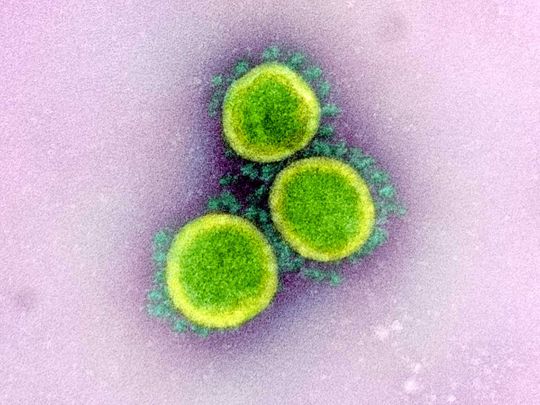
Like Our Facebook Page For Latest News

The whole genome sequencing of SARS-CoV-2 virus from a patient in Dubai was successfully carried out by researchers at the Mohammed Bin Rashid University of Medicine and Health Sciences (MBRU), the COVID-19 Command and Control Centre in Dubai, announced on Wednesday.
The was first full genome sequencing of the virus in the UAE.
“This information can help trace the origin of infection in this specific patient from the UAE, and can tell us a lot about viral transmission in the country. Moreover, given Dubai’s role and geographic position as a bridge between the East and the West, this information will also help in understanding how the pandemic has been spreading globally,” Dr. Ahmad Abou Tayoun, associate professor of genetics at MBRU and director of the Genomics Centre at Al Jalila Children’s Hospital, said:
“We aim to fully sequence viral samples from 240 patients with COVID-19 across various age groups and at different time points of this pandemic. We will also collect information on the severity of disease in our patients which can help us understand if different strains of the virus are associated with different levels of disease severity,” said Alawi Alsheikh Ali, MBRU’s Provost, member of the Emirates Scientist Council and Chair of the Scientific Advisory Group for the Command and Control Centre.
Following is a compilation of questions and answers from researchers from around the world.
What’s a genome?
A genome is the complete set of genetic instructions of an organism. It contains all the information required to build and maintain the organism. Each cell in the body contains this same set of instructions.
What’s genetic sequencing?
Genetic sequencing or DNA (deoxyribonucleic acid) sequencing is the process of determining the nucleic acid sequence (order of nucleotides in a DNA). The nucleotide sequence is the most basic knowledge of a gene or genome. It contains the instructions for building an organism.
What’s the benefit of whole genome sequencing?
Genome sequencing has become a powerful tool for tracking diseases. Full genome sequencing will help researchers identify genetic changes that occur in the virus when it spreads through the population.
How will it track the spread of the virus?
The changes in the genetic sequence of the viral genomes collected from several patients will allow the monitoring of the spread of the disease within the country and between populations over time.
It will also help identify infection hot spots or superspreaders (individuals who spread the infection to a larger than expected number of people). This will enable targeted public health interventions to contain the spread of the disease.
Will it lead to treatments and vaccines?
Genomic sequencing will help us understand COVID-19 and its spread, leading to the development of treatments and vaccines that target specific features of the virus.
It will also provide a better insight into the effectiveness of treatments and vaccines as the virus mutates.
What happens if the virus evolves?
Tracking the virus will help researchers understand genetic changes that place and alert them to more virulent strains. The early warning will be vital to take measures to minimise the spread of the disease and develop new treatments and vaccines.
How will it help prepare for the future?
All the information can be used in responding to future pathogen outbreaks efficiently and effectively. Unlocking the genetic code of the novel coronavirus will also help us prevent other diseases
How fast is the coronavirus mutating?
Genomic analysis has suggested that this particular type of coronavirus is mutating slowly, which reduces the chances of it becoming more deadly.
It mutates about twice a month. These minor mutations will not change its potency, but they allow researchers to understand how the virus has spread from one part of the world or country to the next.
What is the coronavirus genomic data?
The SARS-CoV-2 genome, first sequenced by Chinese researchers, is an RNA molecule of about 30,000 bases containing 15 genes. (Our genome is in the form of a double helix of DNA about 3 billion bases in size and contains about 30,000 genes).
Comparative genomic analyses have shown that SARS-CoV-2 belongs to the group of Betacoronaviruses. It is very close to SARS-CoV, which caused the SARS epidemic in 2002.
Like Our Facebook Page For Latest News
The post COVID-19: All you want to know about genome sequencing of the coronavirus appeared first on The Wealth Land.





GIPHY App Key not set. Please check settings